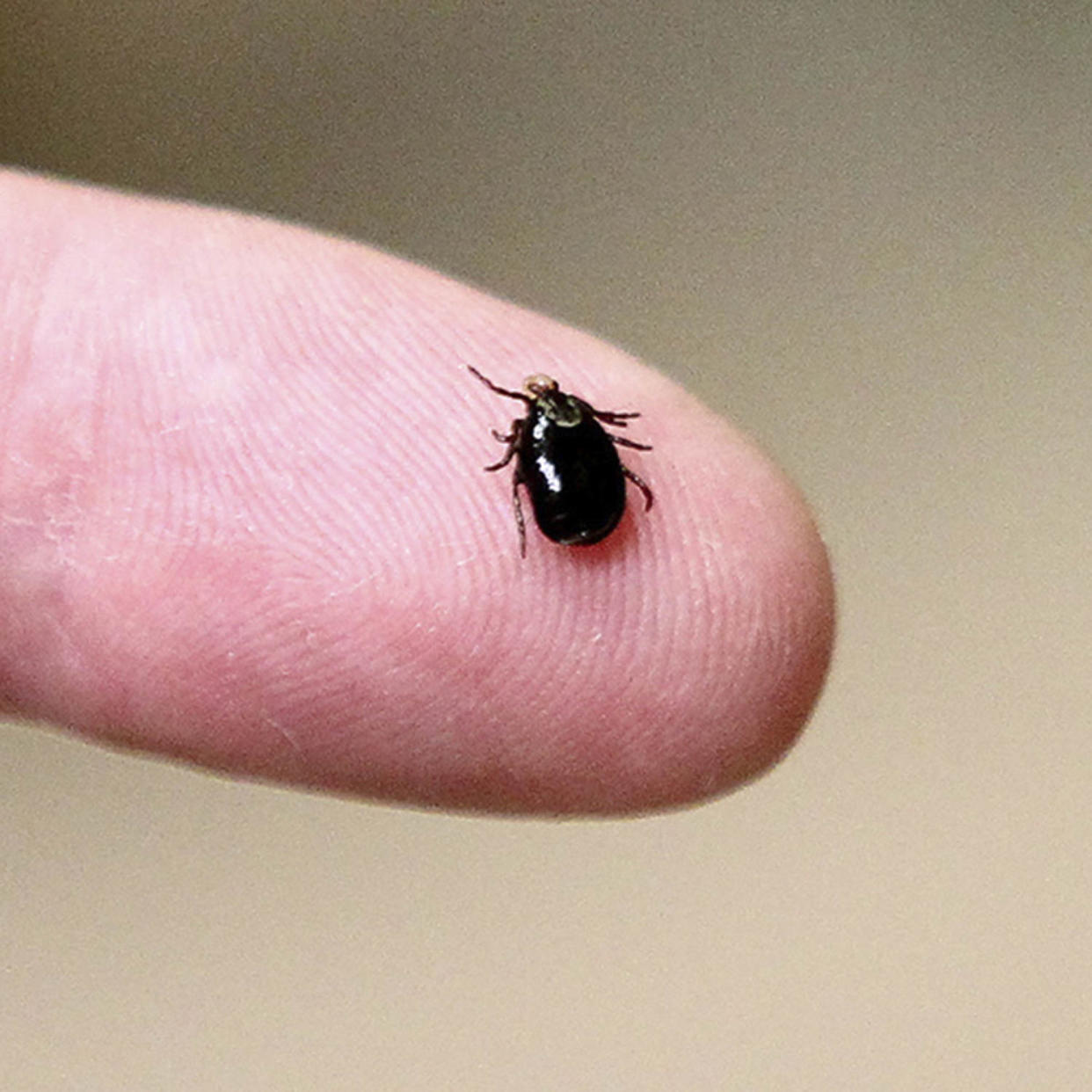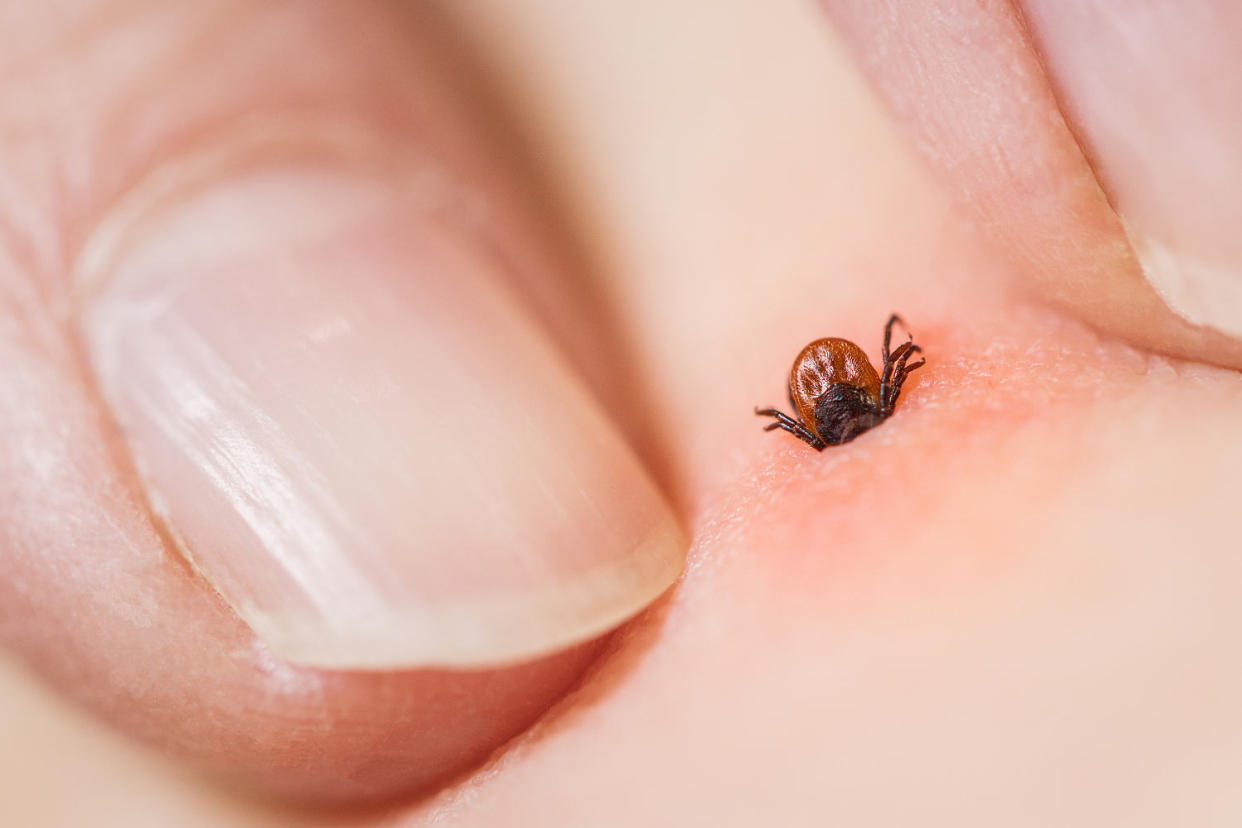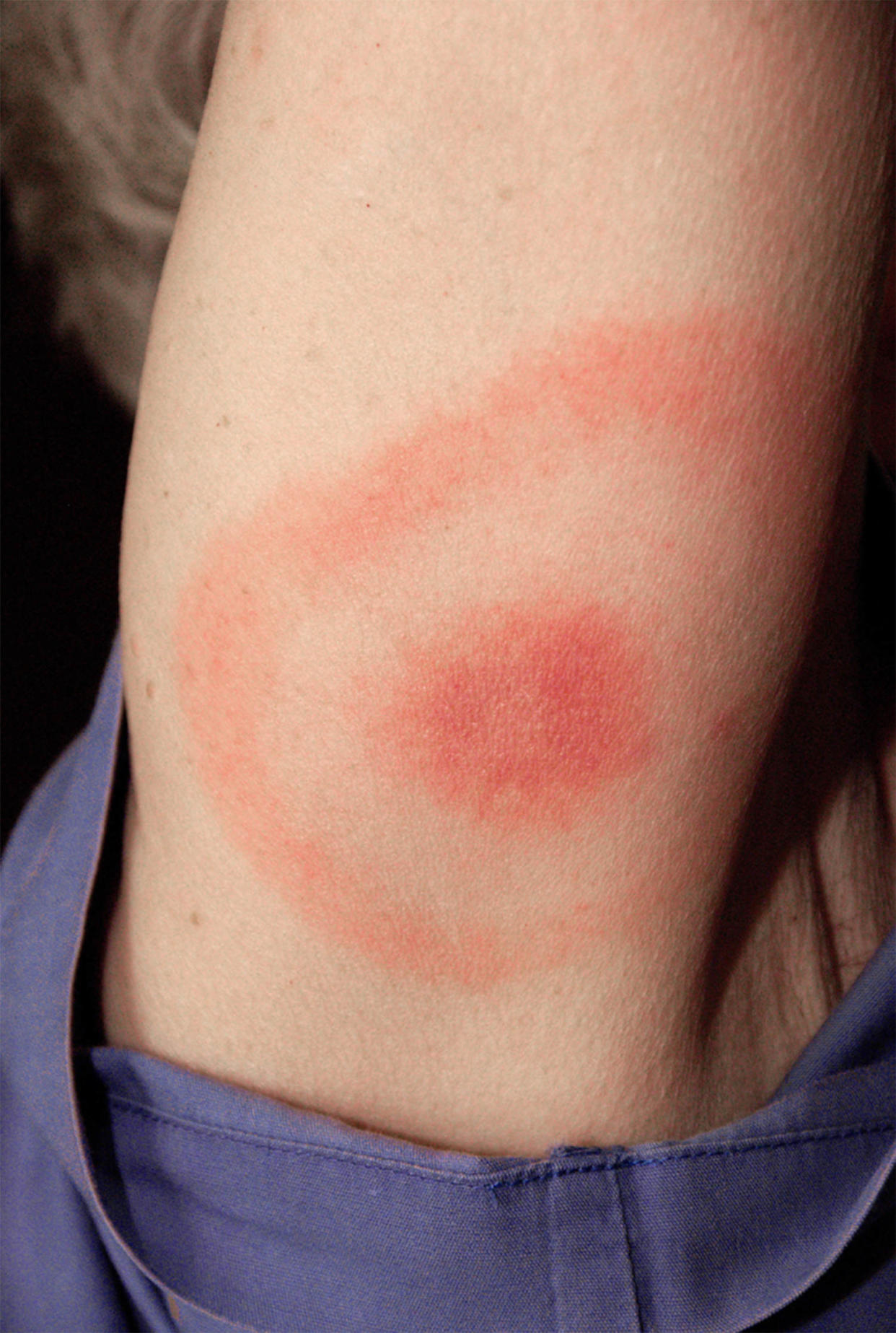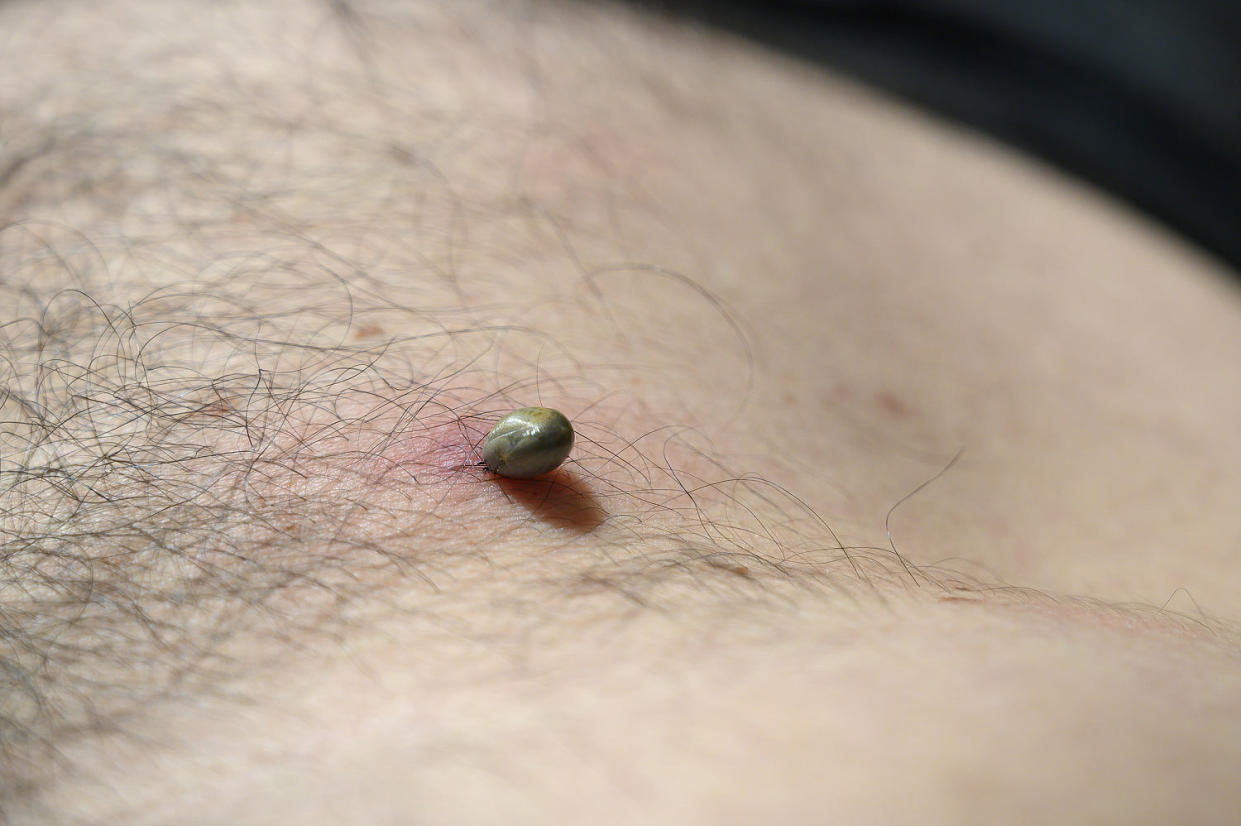Most tick bites go unnoticed. Here's how to identify and treat them
Ticks can be tough to spot. So tough that you may not even know one bit you. But pictures of tick bites — and knowing a little about their behavior — can help you identify their marks.
While ticks are tiny, they're worth making a big deal over. They can spread serious diseases to you and your pets. And, unfortunately, ticks don't just have one season anymore. So it's important to be on the lookout for tick bites pretty much year-round, experts say.
With changing climate patterns and milder winters, these days, "every season is tick season," Matt Frye, Ph.D., an entomologist and educator with the New York State Integrated Pest Management Program at Cornell University, tells TODAY.com.
"If the temperatures are above freezing, you have a chance of encountering a tick," he explains.
Because ticks can transmit many pathogens to humans, including Lyme disease, Rocky Mountain spotted fever and even Powassan virus, it’s important to be able to identify the ticks in your area and get care quickly if you think you’ve gotten a tick-borne illness.
And they aren't just hiding in the woods or overgrown grass. These teeny parasites are capable of hiding just about anywhere.
"We live in a residential neighborhood, and you can walk up the side of the street and our dogs come home with ticks on them," Frye says. "Even just on the side of the road, there's plenty of habitat for ticks to thrive."
Before you venture into the wilderness (or for a quick walk around the block), here's what experts want you to know about keeping yourself safe from ticks and pictures to help identify tick bites.
Ticks in the United States
There are many types of ticks in the U.S., and they are often capable of spreading multiple pathogens. Some of the tick species that experts worry most about from a public health perspective include:
Blacklegged ticks, also called deer ticks, which transmit the bacteria that causes Lyme disease along the East Coast. These ticks also spread babesiosis and Powassan virus, the Centers for Disease Control explain.
The Western blacklegged tick, which can also spread Lyme disease but primarily lives on the West Coast.
The lone star tick can transmit Heartland virus and Southern tick-associated rash illness. It can also cause alpha-gal syndrome, which causes an allergy to red meat, TODAY.com explained previously.
The American dog tick spreads the bacteria that causes Rocky Mountain spotted fever, as well as the bacteria that leads to tularemia.

What do tick bites look like?
"Tick bites really can have different presentations, and it depends on what stage you're catching the patient in after the bite," Dr. Melissa Levoska, an assistant professor of dermatology at the Icahn School of Medicine at Mount Sinai, tells TODAY.com.
Depending on the type of tick and the individual person's immune system, they may have a large obvious rash — or nothing at all. People that do notice tick bites often see a small, itchy raised bump that’s similar to a mosquito bite, the Mayo Clinic says. However, that kind of bump can easily be confused for may other skin issues, including other common bug bites.
However, most people who get a tick bite never even notice the bite itself. And that's often due to the tick's biology.
Ticks have compounds in their saliva that "prevent pain, clotting and an immune reaction,” Frye explains. “So you may never see any evidence of the tick bite.”

You're more likely to see the tick still attached to you with its mouthparts inserted into your skin. That's why experts encourage people to frequently check themselves (and their pets) for ticks during and after spending time outside in an area where ticks might live.
Sometimes, people who get Lyme disease from a tick bite will develop a red rash called erythema migrans that shows up in a bullseye pattern, Levoska says. "It can present anywhere on the body, but more commonly it's on the chest, abdomen, back area or the legs," she says.
Unfortunately, "the bullseye rash is a really unreliable thing to look for with the tick bite," Frye explains.
While experts originally estimated that somewhere between 60% to 70% of people with the disease would develop a rash like this, more recent evidence suggests that number may actually be as little as 10% to 30%, he says.
So you shouldn't assume that you'll see a bullseye rash if you get bitten by a tick. And you shouldn't assume that you weren't bitten if you don't have the rash.
Other tick-borne illnesses, like southern tick-associated rash illness and Rocky Mountain spotted fever, can also cause distinctive rashes, the CDC notes.

When to see a doctor for tick bites
You don't necessarily need to see a doctor every time you notice a tick bite, Frye says, because it may not have been attached to you long enough to transmit a pathogen.
But Frye does recommend taking a photo of the tick (if you can) so that it can be identified later if necessary. You can also consider sending it to researchers in your area to find out if it carried any pathogens, but that’s not required, he says.
'"It'd be great to know what type of tick it is, so definitely saving it can be helpful," Levoska agrees. Even knowing what stage the tick is in the lifecycle — whether it's a nymph or full-grown adult, for instance — can help identify disease risks, she says.
But you should make note of the tick bite and when it happened. Then, notice if you develop a rash or any flu-like symptoms in the following weeks, he adds. It can take up to 30 days for Lyme disease symptoms to appear after a tick bite, the CDC says.
Signs and symptoms of tick-borne illnesses
According to the CDC, the symptoms of diseases transmitted by ticks can include:
Fever
Chills
Headache
Fatigue
Muscle aches
Joint pain
Rash, which may appear away from the site of the bite
"If you're starting to feel feverish or have any (of the above) systemic symptoms, that's a sign to contact a dermatologist or physician to get further evaluated," Levoska says.
In some cases, your doctor might be able to prescribe prophylactic antibiotics after a tick bite, she adds. Specifically, if the tick that bit you looked engorged with blood, was removed within the last 72 hours and was a blacklegged tick, your doctor might give you a single dose of antibiotics to prevent Lyme disease, the CDC says.

How to prevent tick bites
Frye suggests thinking about tick-bite prevention in three distinct phases: What to do before you leave the house, while you're outside and when you get back.
Before you leave:
Prepare a bag of clothes to change into when you get back, he suggests.
Consider treating your outdoor clothes with permethrin or buying permethrin-treated gear. Unlike repellants, permethrin actually kills ticks.
While you're outside:
Use repellants, like those containing DEET or other ingredients approved by the Environmental Protection Agency.
Wear light-colored clothing that will make it easier to see ticks crawling on you.
You can tuck your pants into socks to make it harder for ticks to get to your skin, Frye says. But if that's not your style, that makes pre-treating your clothes all the more important, he says.
In tick-dense areas, perform regular tick checks while you're outside.
When you return:
If you know you were exposed to ticks, put your exposed clothing directly into the dryer on high heat for 20 minutes to kill any ticks. If you can't do that right away, isolate your exposed clothing in an airtight bag until you can.
Regularly check your body — and any pets that go outside — for ticks. "It is kind of a heavy lift, but we tell people to check themselves every single day for ticks," Frye says, which makes it easier to spot changes in your skin that might be the result of a tick. "That's way more reliable than hoping for a rash," he says.
How to safely remove a tick
It's also crucial to learn how to properly remove a tick that's attached to your skin, Frye and Levoska agree.
"The most important thing to do if you were to be bitten by a tick and you see it on your body is to remove it immediately," Levoska says.
"The best way to remove an attached tick is to use a pair of very pointy tweezers to grab as close to the head as possible, and then gently and steadily pull up," Frye explains.
Try to avoid any twisting motions as you pull because that might break the tick and leave its mouthparts in your skin, Levoska says.
And if that does happen, you should not try to dig them out, Frye advises. Instead, if you can't remove them with tweezers, just leave it alone. "Our bodies will push it out just like a splinter over time," he says.
This article was originally published on TODAY.com
